#gelug buddhism
Explore tagged Tumblr posts
Text
LAMA TSONGKHAPA DAY!!!!!!!
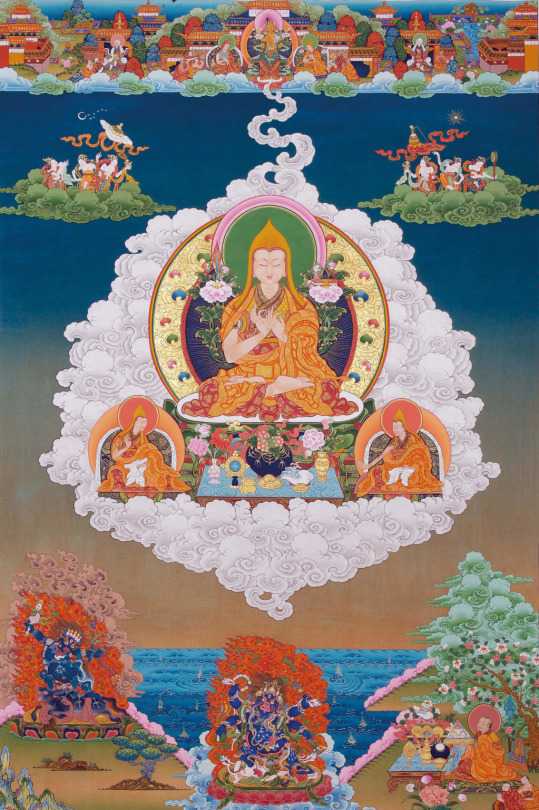
༈ དམིགས་མེད་བརྩེ་བའི་གཏེར་ཆེན་སྤྱན་རས་གཟིགས། ། དྲི་མེད་མཁྱེན་པའི་དབང་པོ་འཇམ་དཔལ་དབྱངས། ། བདུད་དཔུང་མ་ལུས་འཇོམས་མཛད་གསང་བའི་བདག ། གངས་ཅན་མཁས་པའི་གཙུག་རྒྱན་ཙོང་ཁ་པ། ། བློ་བཟང་གྲགས་པའི་ཞབས་ལ་གསོལ་བ་འདེབས། །
mikmé tsewé terchen chenrézik drimé khyenpé wangpo jampal yang düpung malü jomdzé sangwé dak khangchen khépé tsukgyen tsongkhapa lobzang drakpé shyapla solwa dep
Great treasury of non-referential compassion, Avalokiteshvara, Powerful lord of flawless wisdom, Manjushri, And destroyer of all the hosts of mara, Vajrapani, Lord of Secrets— Crowning glory amongst all the learned masters of the Land of Snows, Tsongkhapa Lobzang Drakpa, at your feet I pray!
(Tibetan text, romanization and translation from Rigpa Wiki.)
May the wisdom and vast, systematic knowledge of Buddhist scripture attained by the great guru Je Tsongkhapa, and transmitted to us by his disciples in the gelug tradition, guide us in this upcoming year. May the teachings remain in this world and benefit all sentient beings until we attain the complete cessation of suffering.
#buddhism#buddhadharma#dharma#tsongkhapa#losang dragpa#gelug#gelug buddhism#gelugpa#tibetan buddhism#lama tsongkhapa
22 notes
·
View notes
Text
Book of the Day - The Art of Happiness
Today’s Book of the Day is The Art of Happiness, written by His Holiness The Dalai Lama in 1998 and published by Riverhead. Jetsun Jamphel Ngawang Lobsang Yeshe Tenzin Gyatso (born Lhamo Döndrub), the 14th Dalai Lama, is the leader of Tibetan Buddhism since 1950 and also the leader of the Tibetan Government in Exile after the Chinese invasion of Tibet in 1959, and a Nobel Peace Prize Laureate…
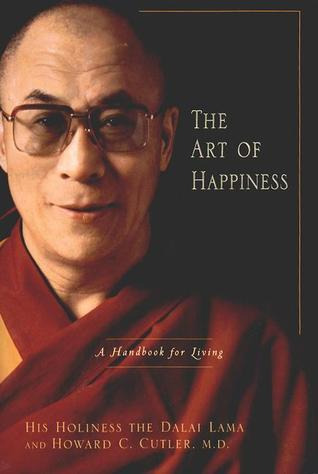
View On WordPress
#anger#Anxiety#behaviours#beliefs#book recommendation#book review#bookstagram#booktok#Buddhism#Buddhist practice#Dalai lama#fear#Free Tibet#Gelug Buddhism#Happiness#meditation#mindfulness#motivations#Nobel Peace Prize#Nobel Peace Prize Laureate#peaceful spirit#perspective#Psychology#Raffaello Palandri#Tenzin Gyatso#Tibet#Tibetan Buddhism#Tibetan Government in Exile
2 notes
·
View notes
Text

Not yet blocked, but a present for a friend of mine who is a Gelug nun.
12 notes
·
View notes
Text
It really is a shame that there's no online Tendai sangha that meets at a time that is convenient for me or even just has a presence somewhere less ephemeral than video calls because the idea of an integrated Precepts + Meditation + Pure Land + Vajrayana approach held together by the glue of the Lotus Sutra seems ideal for me but as it is I'm just left to cobble my own practice out of my forays into the disparate schools of Chinese Pure Land, Gelug, and (to my great surprise) Nichiren.
#not that I think my practice is bad mind y'all#the gelug approach to samatha and vipassana suits me I think#I am excited to begin the refuge ngondro practice with Sravasti Abbey#I also appreciate having the low commitment fallback of Pure Land practice even if I shy away from it at times#and tbh I have been warming up to Nichiren-descended Lotus Sutra traditions the more I give them a shot#even if I'm not too fond of the historical person of Nichiren#buddhism#oh btw watch me add yet anothe thing to that list not too soon afterwards
0 notes
Text



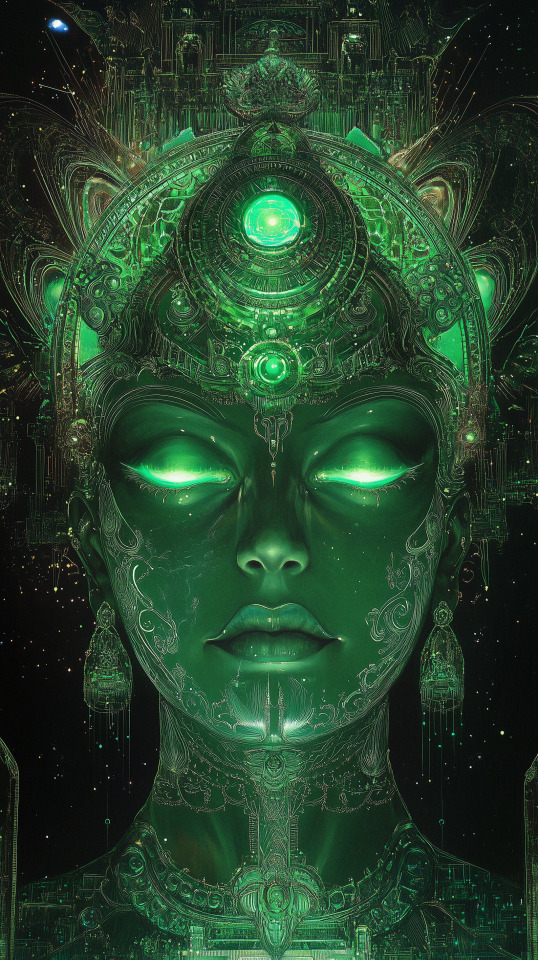
Goddess Tara ॐ Talon Abraxas
Goddess of Compassion - One Who Saves
Diamonds are Her Sacred Stone.
Tara or Arya Tara, also known as Jetsun Dolma, is a female Bodhisattva typically associated with Tibetan Buddhism. She is the "mother of liberation", and represents the virtues of success in work and achievements.
Tara is actually the generic name for a set of Bodhisattvas of similar aspect. These may more properly be understood as different aspects of the same quality, as Bodhisattvas are often considered metaphoric for Buddhist virtues. As Mahatara, Great Tara, she is the supreme creatrix and mother of all the Buddhas and Bodhisattvas.
Tara is the Feminine Goddess Archetype in Hindu Mythology. Tara governs the Underworld, the Earth and the Heavens, birth, death and regeneration, love and war, the seasons, all that lives and grows, the Moon cycles - Luna - feminine - creation. Typically Tara is seen as a slender and beautiful woman of white complexion, long golden hair and blue eyes.
Her animals are the sow, mare, owl and raven.
She is the most popular figure in the Tibetan pantheon of deities, the beautiful goddess Tara, (pronounced tah' rah) whose name in means 'Star' - originated in Indian Hinduism as the Mother Creator, and her many representations spread from Ireland to Indonesia under many different names.
In later Hindu scriptures, she is depicted as one of the eight major aspects of the Divine Feminine Principle, a loving manifestation in contrast to the fiercesome Kali. Like a star that perpetually consumes its own energy, Tara represents the never-ending desires that fuel all life.
Adopted by Buddhism from Hinduism by the 3rd century B.C. , Tara appears in Buddhism, Jainism, and particularly, Tibetan Lamaism, as a complex array of manifestations: goddess of ascetism and mysticism, mother creator, protectress of all humans as they cross the sea of life.
The most widely known Taras are:
Green Tara, known for the activity of compassion, the consort of the Dhyani Buddha Amogasiddhi, and is incarnated in all good women.
White Tara, also known for compassion, long life, healing and serenity; also known as The Wish-fulfilling Wheel, or Cintachakra. As White Tara, she rose from a lotus blooming in the lake that formed from the first tear of compassion of great bodhisattva Avalokiteswara (whose human incarnation is the Dalai Lama), and is considered his consort.
Red Tara, of fierce aspect associated with magnetizing all good things Black Tara, associated with power Yellow Tara, associated with wealth and prosperity. Blue Tara, associated with transmutation of anger
Cittamani Tara, a form of Tara widely practiced in the Gelug School of Tibetan Buddhism, portrayed as green and often confused with Green Tara
There is also recognition in some schools of Buddhism of twenty-one Taras. A practice text entitled "In Praise of the 21 Taras", is recited during the morning in all four sects of Tibetan Buddhism. Some Tibetan Buddhists practice a mantra meditation called Tara Practice. The main Tara mantra is; Om Tare Tu Tare Ture Soha.
31 notes
·
View notes
Text

Willingness To Change
Many people who approach the practice of Buddhism are willing to sacrifice one or two hours of their day in order to perform some ritual practice or engage in meditation. Time is relatively easy to give up, even though their life may be very busy. But, they are not willing to change anything of their personality - they are not willing to forgo anything of their negative character. With this type of approach to Buddhism, it hardly matters how much meditation we do, our practice remains merely a hobby or a sport. It does not touch our lives. In order actually to overcome our problems, we have to be willing to change - namely to change our personality. We need to renounce and rid ourselves of those negative aspects of it that are causing us so much trouble.
The Gelug/Kagyu Tradition of Mahamudra
~ HH THE 14TH DALAI LAMA
35 notes
·
View notes
Note
hello and happy new year! i wanted to ask about your resources for learning about buddhism. i enjoy your philosophical and spiritual thoughts and am hoping to find more ways to learn about or get into it, if you have any to share!
your local sangha and dharma leader!
bare essentials: buddhanet dot net!
personal rec: studybuddhism dot com! (tibetan focus, love alex berzin!)
library; WIP, buddhist canon: 84000!
library; theravada suttas (tipitaka): dhammatalks dot org!*
(i lack other centralized theravada (predominantly south- and southeast-asian) libraries! i scavenged!)
essential zen practice: thích nhất hạnh!
essential tibetan: fpmt dot org! (lama yeshe and lama zopa rinpoche are prolific gelug authors!)
(i only rec TNH and zen because theyre on-the-shelf so to speak, and i dont recall any centralized mahayana libraries ive used for my scavenging!)
online sangha: dharmawheel dot com for mahayana, dhammawheel dot com for theravada!
online sangha: theres a discord server somewhere out there if i can find it comprised a spectrum between laymen and experts! lmk if you want me to look!
when researching i rec starting from scholastic cohorts that instigate schisms! then tracing their old schools lineage!
i hope you see this and dont just follow my reblog blog! <3
*previous version listed accesstoinsight dot com, which a dear friend of mine (@unthinkingclunk) corrected as follows:
FYI accesstoinsight is largely "dead"-- it's not being updated anymore, you can see this link for details:
https://www.dhammatalks.org/suttas/ati.html
But in short you'll see many links to accesstoinsight all over but those pages now largely point out at the top of the page (for any specific sutta) that the current site is dhammatalks.org (which is the base site of the link I posted)
14 notes
·
View notes
Text
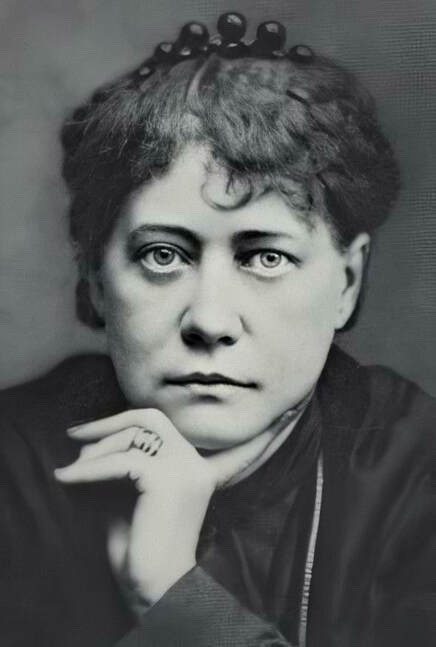
We are initiating a new course on The Voice of the Silence, an ancient manual of esoteric instruction. This work was translated by the eminent Helena Petrovna Blavatsky, founder of the Theosophical Society, whose scholarly and spiritual achievements cannot be easily estimated. This brief mystical text is a collection of fragments from The Book of the Golden Precepts, an obscure and rich scripture from which The Secret Doctrine was inspired.
The Voice of the Silence was not fully translated, since it would have required Blavatsky many years just to organize her documents, let alone translate the work in its totality. She also mentioned that much of this scripture is too sacred and profound to be understood by her students. This is a powerful statement, one that should not be overlooked. This guide, she said, is for serious practitioners who are awakening consciousness.
Although The Voice of the Silence is brief, it is dense, and therefore difficult to interpret. As with any deep work, it requires an awakening consciousness to decipher, apply, and realize. Despite the brevity of this work, it synthesizes the entire path to liberation. This is no small feat.
The origins and translation of this work has often been contested and disputed. However, the Panchen Lama affirmed its authenticity. In case you do not know, the Panchen Lama is second in command to the Dalai Lama within the Gelug school of Tibetan Buddhism. As he stated in 1925:
It is the “only true exposition in English of the Heart Doctrine of the Mahayana and its noble ideal of self-sacrifice for humanity.” ―The Panchen Lama (1925)
#gnosis#gnosticism#spirituality#meditation#awakening#consciousness#gnostic#spiritual#chicago gnosis#samael aun weor#gnostic academy of chicago#kabbalah#alchemy#psychology#spiritual psychology#mysticism#voice of the silence#how to meditate#meditation podcasts#spiritual podcasts#helena blavatsky#theosophy#tibetan buddhism#buddhism#christianity#gnostic christianity#esoteric christianity#bodhisattva#mahayana#tantra yoga
37 notes
·
View notes
Text
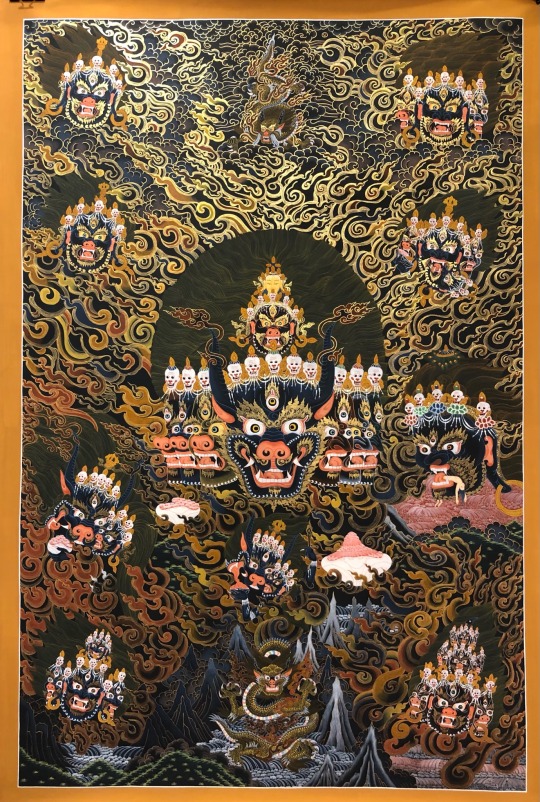
Yamantaka (Slayer of Yama, the Lord of Death).
.
.
.
.
.
#vajrabhairava #yamantaka #lordofdeath #manjushri #bodhisattva #wisdom #wrath #thangka #thankapainting #lamathankapaintingschool #dharma #vajrayana #buddhism #sacred #art #himalayan #traditional #tantra #buffalohead #himalayanart #gelug #sadhana #visualization #enlightened #meditation #dhamma #mindfullness
18 notes
·
View notes
Text
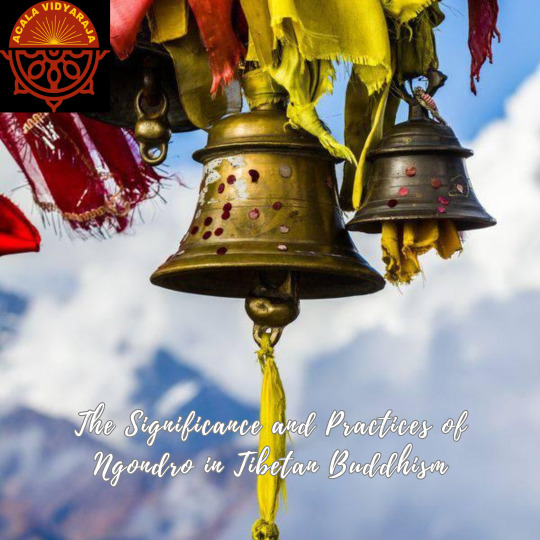
The Significance and Practices of Ngondro in Tibetan Buddhism
The term "ngondro" in Tibetan Buddhism, often translated as "preliminary practices," holds deeper connotations of preparation rather than mere preliminaries. Just as one prepares for a journey, ngondro practices prepare practitioners for the spiritual journey, essential for sustaining progress in the path of enlightenment.
The Purpose of Ngondro:
Ngondro practices serve to build positive energy and diminish negative tendencies accumulated over lifetimes. By engaging in hundreds of thousands of repetitions, practitioners gradually rewire their minds, paving the way for transformative growth.
Approaches to Ngondro:
There are two primary approaches to Ngondro: initiation at the start of Buddhist practice or incorporation along the way to enhance both sutra and tantra practices. While the former tests commitment and builds discipline, the latter integrates practices into the ongoing spiritual journey, emphasizing the importance of avoiding mechanical repetition and cultivating sincere motivation.
Illustrative Examples:
1. Milarepa's Journey: Milarepa, the renowned Kagyu yogi, underwent rigorous preliminary practices under his teacher Marpa's guidance, demonstrating the transformative power of sincere motivation in overcoming past negative actions.
2. Tsongkhapa's Method: Tsongkhapa, the founder of the Gelug tradition, exemplified the integration of Ngondro practices into advanced stages of study and practice. Despite his scholarly prowess, Tsongkhapa embarked on extensive Ngondro retreats under the guidance of Manjushri, emphasizing the need to cultivate positive force and rid oneself of negative potential for deeper understanding.
Personal Reflections:
Drawing from personal experience, the importance of periodic retreats or engagements in teaching and sharing Buddhist wisdom, akin to "bodhichitta retreats," is highlighted. Additionally, the practice of mantra repetition with visualizations serves as a means to clarify the mind and overcome obstacles in writing or translation endeavors.
Conclusion:
Ngondro practices in Tibetan Buddhism serve as vital preparations for the spiritual journey, offering pathways to cultivate positive energy, overcome negative tendencies, and deepen one's understanding of the teachings. Whether undertaken at the outset or integrated along the way, Ngondro practices offer profound opportunities for growth and transformation on the path to enlightenment.
#buddha#buddhist#buddhism#dharma#sangha#mahayana#zen#milarepa#tibetan buddhism#thich nhat hanh#dzogchen#dzambala#Padmasambhava#Guru Rinpoche
2 notes
·
View notes
Text
The internet is such a wonderful technology, with a few clicks and keystrokes I can hear Dharma teachings given years ago in Malaysia by a dead Mongolian-American lama who trained in India under Tibetan masters, all from the comfort of my own home in Guatemala. Even though it's the Dharma Decline Age, we are blessed with many opportunities to encounter the teachings that we would have never had mere decades ago.
8 notes
·
View notes
Text
Book of the Day - The Leader's Way
Today’s Book of the Day is The Leader’s Way, written by His Holiness the Dalai Lama and Laurens van den Muyzenberg in 2011 and published by Nicholas Brealey Publishing. His Holiness the Dalai Lama is the highest spiritual leader and head of Tibet and lives in exile as a refugee in India after the Chinese invasion of his motherland in 1959. He is also the leader and a monk of the Gelug…

View On WordPress
#awareness#Book#book recommendation#book review#Buddhism#buddhist wisdom#Business#compassion#Dalai lama#Gelug Buddhism#His Holiness The Dalai Lama#inspiration#leadership#Management#meditation#mindfulness#Motivation#purpose#Raffaello Palandri#Raffaello Palandri Buddhist Master
4 notes
·
View notes
Text
Lingshan Hermit: We discuss the clouds in the sky, the tea in our cups; we refrain from worldly chatter.
Today, almost every Buddhist seems to be advocating the Rimé philosophy, which has nearly become a diplomatically correct term. This isn't just within Buddhism; politicians globally are also striving hard to showcase their embracement of Rimé sentiments. You seldom hear any religious or political leaders (except Trump) saying, "We only consider our own sect or country, and never others." But in reality, their actions contradict their words. Even within Buddhists, those who genuinely embody the spirit of Rimé are extremely rare. Many Buddhists are not even aware of what Rimé truly signifies.
Many people ask me what Rimé is. Rimé is an attitude; it means all Buddhist teachings, irrespective of Tibetan or Han traditions, originate from Buddha. They appear so distinct or even contradictory because they are spoken to different audiences, or have been shaped by various traditions and styles across different regions. Not everyone requires the same teachings, nor should all teachings bear the same facade across regions. You may not understand for whom a particular teaching is intended, but it will undoubtedly prove beneficial for some practitioners. Therefore, we must respect all teachings and traditions, for they are all Buddha's teachings. Each lineage has proven its significance; countless enlightened beings have emerged from each lineage. It's akin to a visit to a pharmacy: we may only need aspirin, but that doesn't mean all other medicines should be discarded, or that every patient, be it an AIDS or lupus patient, should take aspirin. Nor should one think that they must take every medicine simultaneously. All medicines demand respect; you might only need one kind, but many others need different ones to treat their conditions.
It's said that when Jamyang Khyentse Wangpo was giving teachings, if he was teaching the Gelug school's Dharma, he would put on the Gelug hat and follow the Gelug tradition to show respect for the Gelug school.
Rimé does not imply everyone should celebrate together, forgetting their differences. Rimé is a sentiment only very advanced practitioners possess. Although everyone says they should be non-sectarian, it does not mean everyone who says so truly embodies it. In fact, it's quite the opposite; most people are not Rimé at all; they are merely pretending. But the issue is, you can't fake Rimé; it's the result of spiritual practice. The more advanced your practice, the more Rimé your attitude. If you are honest with yourself, you should realize you don't care about the survival of other sects. You don't see all teachings as equal. Even if others are eloquent, you don't think their sect is better than yours. Among Buddhists, everyone is talking about Rimé, but Rimé is increasingly becoming a politically correct diplomatic term. Buddhists speaking of Rimé increasingly resembles politicians lying for political correctness. This is precisely my concern.
You know, I've always discouraged gathering people from different sects together—those who like doing this might have had a stroke—even if everyone is a Buddhist, there will be a lot of unpleasantness resulting from it. Maybe you won't see Buddhists shooting at each other with AK47s due to displeasure. But the problems triggered by various emotions aren't few. Why bother? Therefore, I strongly advise against people from different sects becoming friends or getting too close—unless they never discuss sectarian practices, unless they are enlightened beings. In fact, I've had friends from other sects, and when we were together, we only talked about things unrelated to Buddhism. We would discuss the clouds in the sky, the tea in our cups; we didn't talk about sectarian matters. Our sectarian views are very different; only a fool would try to explore these.
But you should know, not every Buddhist knows how to get along with people from different sects. When most people are with others from different sects, they actually do one thing—try to prove that their sect is better or promote their sect. This is bound to invite resentment. More often than not, it leads to a counterattack.
In early 2015, many Europeans naively thought they could live with Muslim refugees. I don't know if they still think the same. Let alone getting Christians and Muslims to coexist peacefully. Even Buddhists, who are generally considered very mild, would generate a lot of friction if they lived together, even if they are from the same sect, even if they share the same teacher. And what about different sects, different civilizations? We are all humans, and we all have human flaws.
For Buddhists, staying where they should be and practicing their Dharma is enough; there really isn't much need to get too close to each other. Based on my limited observations, most inter-Buddhist socializations end up in disagreements. Because everyone thinks they are right, everyone thinks the other should listen to them, everyone thinks the other is insignificant, and everyone thinks their Dharma is better—because it is "theirs." This is exactly the attitude Rimé aims to eliminate—we favor our own Dharma, our own sect, because we love ourselves. Therefore, keeping a moderate distance from each other is a beneficial attitude for both parties.
Written by Lingshan Hermit on July 24, 2016.
Copyright Notice:All copyrights of Ling Shan Hermit's articles in Simplified and Traditional Chinese, English, and other languages belong to the natural person who owns "Ling Shan Hermit". Please respect copyright. Publishers, media, or individuals (including but not limited to internet media, websites, personal spaces, Weibo, WeChat public accounts, print media) must obtain authorization from Ling Shan Hermit before use. No modifications to the articles are allowed (including: author's name, title, main text content, and punctuation marks). We reserve all legal rights.
灵山居士:我们会谈天上的云,杯里的茶,我们不谈论见地
5 notes
·
View notes
Text
Intro Post
Hiya! My name's José but most people online call me Jace, and I go by he/him pronouns. I'm an archaeology major from Guatemala, a convert Buddhist (primarily practicing within the Gelug school but also receiving teachings and practicing within the Chinese Pure Land school) with Kemetic pagan tendencies, and a native Spanish speaker. (I can read French reasonably well and I have a JLPT N5 level knowledge of Japanese too.)
Welcome to my little corner of Tumblr, this is where all cool and interesting/funny things I find go. I tend to reblog/post lots about:
Furry art
Fandom stuff, more often than not Pokémon
Archaeology, time periods and regions vary wildly but I gravitate towards pharaonic Egypt
(I sometimes have original posts about Mesoamerican and specially Mayanist archaeology though)
Buddhism
Kemeticism and Neo-paganism more broadly
Occultism and ceremonial magic
International politics and current events, regrettably
For more focused posting, visit my Warriors sideblog @troutfur. I write fic about the religious cats. Also visit my Buddhism-centric blog @kongque-jiaan.
Always down to chat, feel free to come into my inbox.
No specific DNI, and TBH I am more reluctant to block than I should, but if you come into my inbox with TERFy osteology takes I'll have no mercy. My patience there has been utterly exhausted.
16 notes
·
View notes
Text
REGENCY*/BRIDGERTON OC: MU LAN
template from here!
BASIC INFORMATION
Full Name: Mu Lan [穆岚] (Eastern style) Also Known As: Leah Helena Moore, Martin Atkins Date of Birth: Sept. 24, 1793 (20 by 1813/S1) Sex & Gender: Cis-Female Race/Ethnicity: Chinese (Northeastern Xibe/Xībózú) Sexuality: (Demi) Heterosexual
PHYSICAL APPEARANCE (FC: Olivia Sui & Ming-Na Wen later)
Lan is a young woman who stands at 5'5" (1.65 m). She is initially thin due to her family's impoverished lifestyle, but she gains some weight and muscle mass while in the army. Her light skin tends to sunburn more than tan in extreme heat, and she has a few scars from her time as a bannerman. Her brown eyes are almost as dark as her black hair, which grows quickly but is kept at chin length just in case she needs to tie it up and pass as a man.
PERSONALITY
Sometimes, Lan's parents are exasperated with her, because she often is the opposite of the ideal daughter (in China or England). She is clumsy, independent, and outspoken. However, her kind smile and big heart tend to draw people in rather than push them away. She's also very determined, not to mention intelligent, as she quickly learned English once her family moved to London, knowing that they'd have an easier time if at least two of their seven family members were bilingual. It isn't often that she just "gives up" on any cause or opinion that's dear to her. One of her fears is that her loved ones won't ever accept her for who she truly is, while the other believes she'll dishonor her ancestors. Because of these, she occasionally uses two different English names (one traditionally female, one male). Lan was raised learning about the Gelug school of Tibetan Buddhism, and she knows that most of England is Evangelical (Protestant), but she hasn't found a religion that's really spoken to her yet.
HISTORY
Her family was quite unlucky. Though her parents were a love match (despite being in an arranged marriage), Mu Lan's mother Hua struggled to have children, and ultimately she only had 3 children: Yanmi (a girl), Lan (a girl), and Shi (a boy). On top of that, Lan's father Zhou was a bannerman (basically a soldier), and at that time, men in his profession were paid so little that they had to work another job in addition. He didn't mind farming, but an accident left him crippled, barely able to support his body weight without a cane. So his family worked the fields, and when Zhou was called to serve, his daughter went in his place, disguised as a man. She was gone almost an entire year before she was found out. Wanting to escape punishment and their impoverished situation (not to mention the frequent rebellions the country kept having to deal with), the Mu family went to England. A kind cousin who had joined the middle class by opening a dress shop specializing in silk (specifically custom items, repairs, and alterations) took them in. While there, Mu Lan learned English. Because her parents had taught her to read and do math in Mandarin, she was able to become a sought-after governess who specialized in language (even though teaching foreigners Chinese had been forbidden by the Emperor).
SKILLS
Languages: Mandarin Chinese, English
Disguise: she cross-dresses to go box or visit lower-class friends
Self-Defense: w/sword, archery, limited martial arts, boxing
Extra: horseback riding, lockpicking, sewing
*all this is in a lovely world where Great Britain didn't attack China for trying to end the opium epidemic (and restrict international trade) during the early 1800s. Instead, in the 1790s, Britain sent doctors and others who studied the human body to the East so China could benefit from the medical discoveries the West had made. Therefore, Britain could pay for the tea, silk, and spices they exported with something other than bullion or drugs. Also, China's opium epidemic came to an end within the 1st half of the 19th century.
2 notes
·
View notes
Text
敖包相會 (ovoo rendezvous) - english translation
youtube
youtube
Lyrics by Malaqinfu (玛拉沁夫) and Hai Mo (海默), composed by Tong Fu (通福), and originally sung by Wang Shuli (王树理) and Wu Xiuyun (吴秀云), for the 1953 film 草原上的人们 (People On The Prairie).
Embedded above are the original performance/clip from the film, plus a 2016 cover by Buren Bayaer (布仁巴雅尔) and Wurina (乌日娜), which includes a Mongolian version of the same lyrics. Buren Bayaer, who has since passed away, and Wurina were married and co-directors of the Hulunbeier Children's Choir.
Embedded below, after the lyrics, is a cover by Jamyang Dolma (འཇམ་དབྱངས་སྒྲོལ་མ), as well as some contextual notes on ovoos.
十五的月亮升上了天空哟 为什么旁边没有云彩 我等待着美丽的姑娘呀 你为什么还不到来哟嗬
如果没有天上的雨水呀 海棠花儿不会自己开 只要哥哥你耐心地等待哟 你心上的人儿就会跑过来哟嗬
The fifteenth moon climbs into the sky, oh Why are there no clouds beside me? I'm awaiting a beautiful girl, oh Why have you not yet come to me?
If there is no rainwater from the skies, oh The crabapple flowers won't bloom on their own As long as ge-ge, you wait patiently, oh The person in your heart will come running to you
youtube
t/n:
Ge-ge 哥哥 literally means older brother but is also used as a term of endearment for a boyfriend.
"Aobao" (Mandarin reading of 敖包) is a phonetic translation of the Mongolian ᠥᠪᠥᠭᠭᠠ—also written as ovoo, obo, ebo—referring to a Mongolian ritual altar, made of heaped stones. This originated from Shamanist tradition and has been absorbed into the Gelug or "yellow sect" of Tibetan Buddhism.
The Mongolian steppe is a flatland, with vast stretches having no easy natural landmarks like hills/rivers/woods. The initial purpose of ovoos was to prevent herders from getting lost on their way home. Later, they were used as road markers or boundary markers. Finally, they evolved into a gathering place for local rituals, prayer/worship, and important folk events. There are ovoos dedicated to heavenly gods, gods of nature, village gods, and ancestral gods.
There are four divisions of ovoo sacrifice: blood, referring to the sacrifice of livestock; wine, referring to the scattering of milk/cream/milk wine/white wine over the alter; fire, in which offerings are burned; and jade offerings, which was only used by princes/nobility and no longer practiced. Prayers would be offered in hopes for wind, rain, happiness, and peace.
#lyrics translation#malaqinfu#hai mo#tong fu#wang shuli#wu xiuyun#buren bayaer#wurina#jamyang dolma#mandarin#mongolian
3 notes
·
View notes